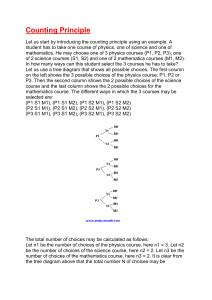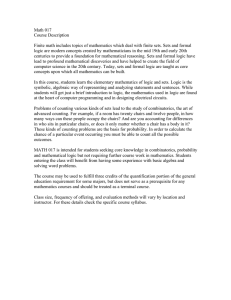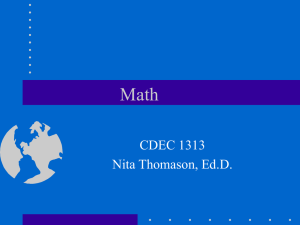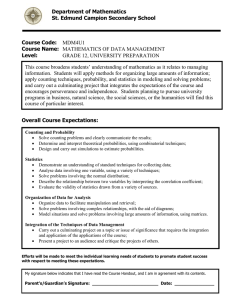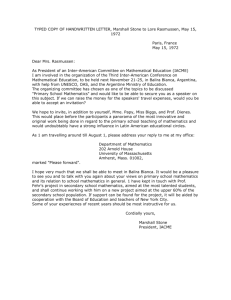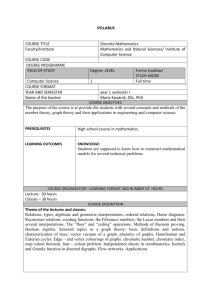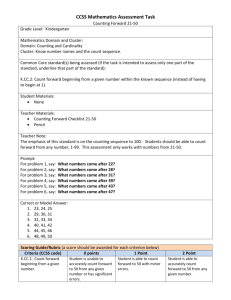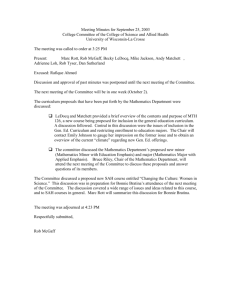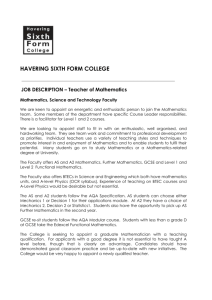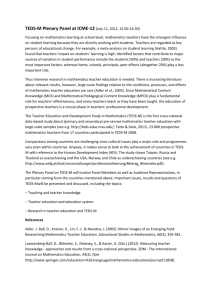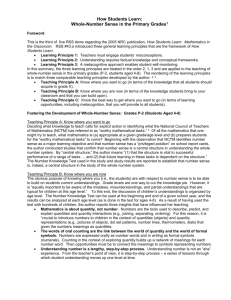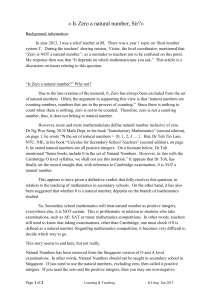Mathematics and Language Arts in 3rd Grade
advertisement
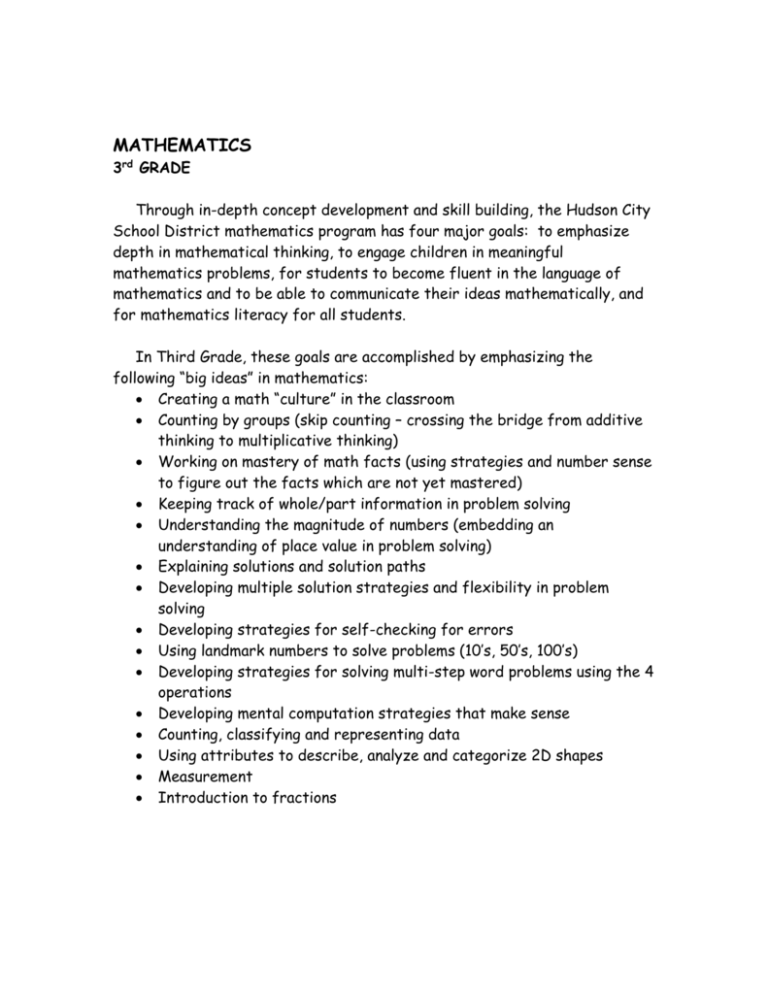
MATHEMATICS 3rd GRADE Through in-depth concept development and skill building, the Hudson City School District mathematics program has four major goals: to emphasize depth in mathematical thinking, to engage children in meaningful mathematics problems, for students to become fluent in the language of mathematics and to be able to communicate their ideas mathematically, and for mathematics literacy for all students. In Third Grade, these goals are accomplished by emphasizing the following “big ideas” in mathematics: Creating a math “culture” in the classroom Counting by groups (skip counting – crossing the bridge from additive thinking to multiplicative thinking) Working on mastery of math facts (using strategies and number sense to figure out the facts which are not yet mastered) Keeping track of whole/part information in problem solving Understanding the magnitude of numbers (embedding an understanding of place value in problem solving) Explaining solutions and solution paths Developing multiple solution strategies and flexibility in problem solving Developing strategies for self-checking for errors Using landmark numbers to solve problems (10’s, 50’s, 100’s) Developing strategies for solving multi-step word problems using the 4 operations Developing mental computation strategies that make sense Counting, classifying and representing data Using attributes to describe, analyze and categorize 2D shapes Measurement Introduction to fractions LANGUAGE ARTS The language arts program at McDowell School includes the basic components of language: reading, writing, listening, and speaking. These interactive processes are tools the students can use to construct meaning through an integration of prior knowledge and information from others. The language processes develop simultaneously and are mutually enhancing. Third Grade emphasizes: Word recognition and fluency Comprehending, interpreting, and reflecting on what is read Summarizing and retelling texts Distinguishing between fiction and nonfiction Use of appropriate reference materials Drawing conclusions from information in maps, charts, graphs and diagrams Showing interest and enjoyment in reading Applying spelling skills in all written work Clearly expressing ideas verbally and through the written word Develop the written products that convey a sense of completeness Applying knowledge of punctuation and grammar Using parts of speech to enhance the meaning in finished writing Increasing vocabulary through use of context clues, prefixes and suffixes and roots Using the writing process from rough draft to publication
